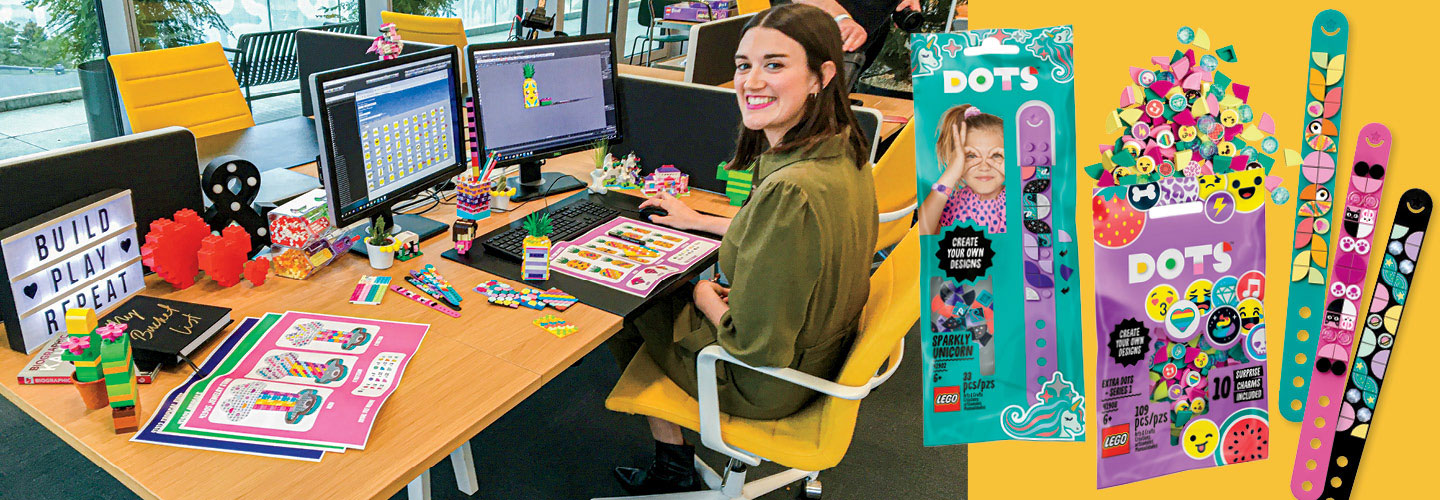SA: How do you test your design ideas?
AC: First, the designers build using white bricks to see the shape or silhouette. Once we’re happy with the shape, we use colorful bricks. If the color doesn’t exist, then we paint it. We use 3-D printers to create prototypes of parts that don’t exist. We may make up to 10 different versions of a build before it becomes a product. Throughout the process, we try out different versions with kids. You really have to bring out your inner child every day in order to create the best toys.
SA: What products have you worked on recently?
AC: I worked on LEGO DOTS for two-and-a-half years, which launched in March. While traditional LEGO sets are about making buildings and 3-D scenarios to tell stories, DOTS is about exploring patterns and decorating different canvases. For example, users can create colorful patterns to add to bracelets and pencil holders. It’s really about self-expression, creativity, and putting the kids at the center as designers of the product.
SA: What challenges do you face?
AC: One of the hardest parts is when you create a product you’re really proud of and have children test it out, and they hate it, or it doesn’t work at all. The kids will be really honest and tell you how it is, which is what we want. Sometimes you have to make the choice to let your favorite ideas go and move on to something new.
SA: What are the most important skills for a product designer to have?
AC: You have to be able to creatively communicate your ideas, whether that’s through drawing, building, or designing 3-D on a computer. Another aspect is creatively solving problems. One of the great things about designing with LEGO is that there are many different ways to solve every problem. If it doesn’t work one way, find another way to get the same effect.
SA: Do you have advice for students interested in designing products?
AC: When you’re walking down the street, look in shops and at the people around you. Observe what people are doing, what they’re wearing. Take opportunities to practice your creativity—drawing, sketching, arts and crafts, whatever you can do to build your creative skills. It’s also good to work on English and math skills to help you execute your ideas. Some people come in with arts, engineering, computer design, or math backgrounds.

